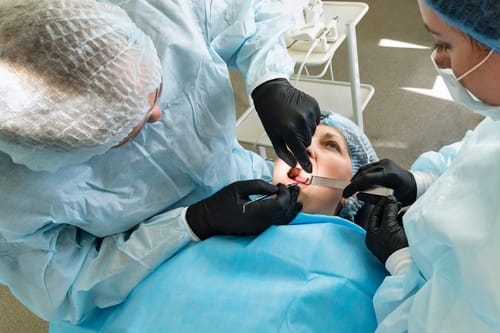A tooth extraction, also known as dental extraction or exodontia, is the removal of a tooth from its socket in the jawbone. It is a common dental procedure used to treat a variety of issues, such as severe tooth decay, infection, gum disease, or crowding. If you are scheduled for a tooth extraction, you may be wondering what to expect. In this blog, we will explore the tooth extraction process, including preparation, the procedure itself, and post-operative care.
Preparation
Before your tooth extraction, your dentist will perform a thorough examination of your tooth and the surrounding tissues. They may take dental X-rays to assess the position and condition of the tooth roots. Your dentist will also review your medical history, including any medications you are taking and any allergies you have. Based on this information, they will determine the best approach for the extraction and any necessary sedation options.
The Procedure
The tooth extraction procedure typically follows these steps:
- Local Anesthesia: Before the extraction, your dentist will administer local anesthesia to numb the area around the tooth. If you are undergoing multiple extractions or are particularly anxious, they may also offer sedation options, such as oral sedation or nitrous oxide (laughing gas).
- Tooth Removal: Once the area is numb, your dentist will use specialized dental instruments to carefully loosen the tooth from its socket. In some cases, they may need to make a small incision in the gum tissue to access the tooth root. Once the tooth is loose, they will gently remove it from the socket.
- Socket Cleaning: After the tooth is removed, your dentist will thoroughly clean the socket to remove any debris or infection.
- Gauze Placement: A piece of gauze will be placed over the extraction site to help control bleeding and promote blood clot formation.
- Post-Operative Instructions: Your dentist will provide you with post-operative instructions, including how to care for the extraction site, what foods to avoid, and any medications you may need.
Post-Operative Care:
After your tooth extraction, it is essential to follow your dentist’s post-operative care instructions to ensure proper healing and minimize discomfort. Here are some general tips for post-operative care:
- Bite on Gauze: Bite down gently on the gauze pad placed over the extraction site to help control bleeding. Change the gauze pad as needed.
- Apply Ice: Apply an ice pack to the outside of your cheek near the extraction site to reduce swelling and discomfort.
- Avoid Drinking Through a Straw: Avoid using a straw for the first 24 hours after your extraction, as the sucking motion can dislodge the blood clot and delay healing.
- Eat Soft Foods: Stick to soft foods, such as yogurt, mashed potatoes, and scrambled eggs, for the first few days after your extraction. Avoid hard, crunchy, or sticky foods that could irritate the extraction site.
- Take Pain Medication: If you experience discomfort, your dentist may recommend over-the-counter pain medication, such as ibuprofen or acetaminophen.
- Follow-up: Attend any follow-up appointments scheduled by your dentist to ensure proper healing and address any concerns.
Contact Dentistry of West Bend For Your Tooth Extraction
Tooth extractions are a routine dental procedure used to treat various dental issues. By understanding the tooth extraction process, following your dentist’s pre and post-operative instructions, and practicing proper oral hygiene, you can promote optimal healing and minimize any discomfort. If you have any questions or concerns about your tooth extraction, don’t hesitate to contact us today.


Recent Comments